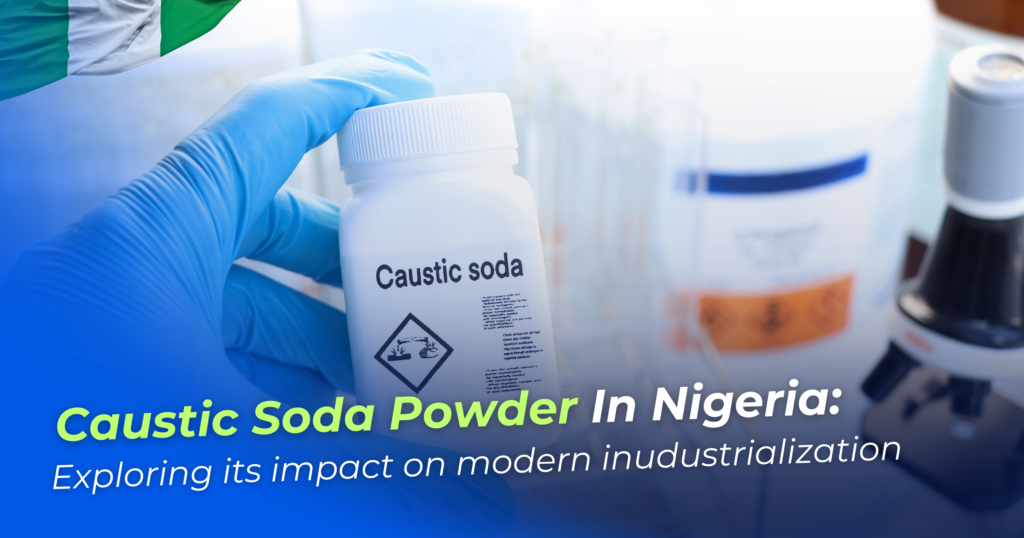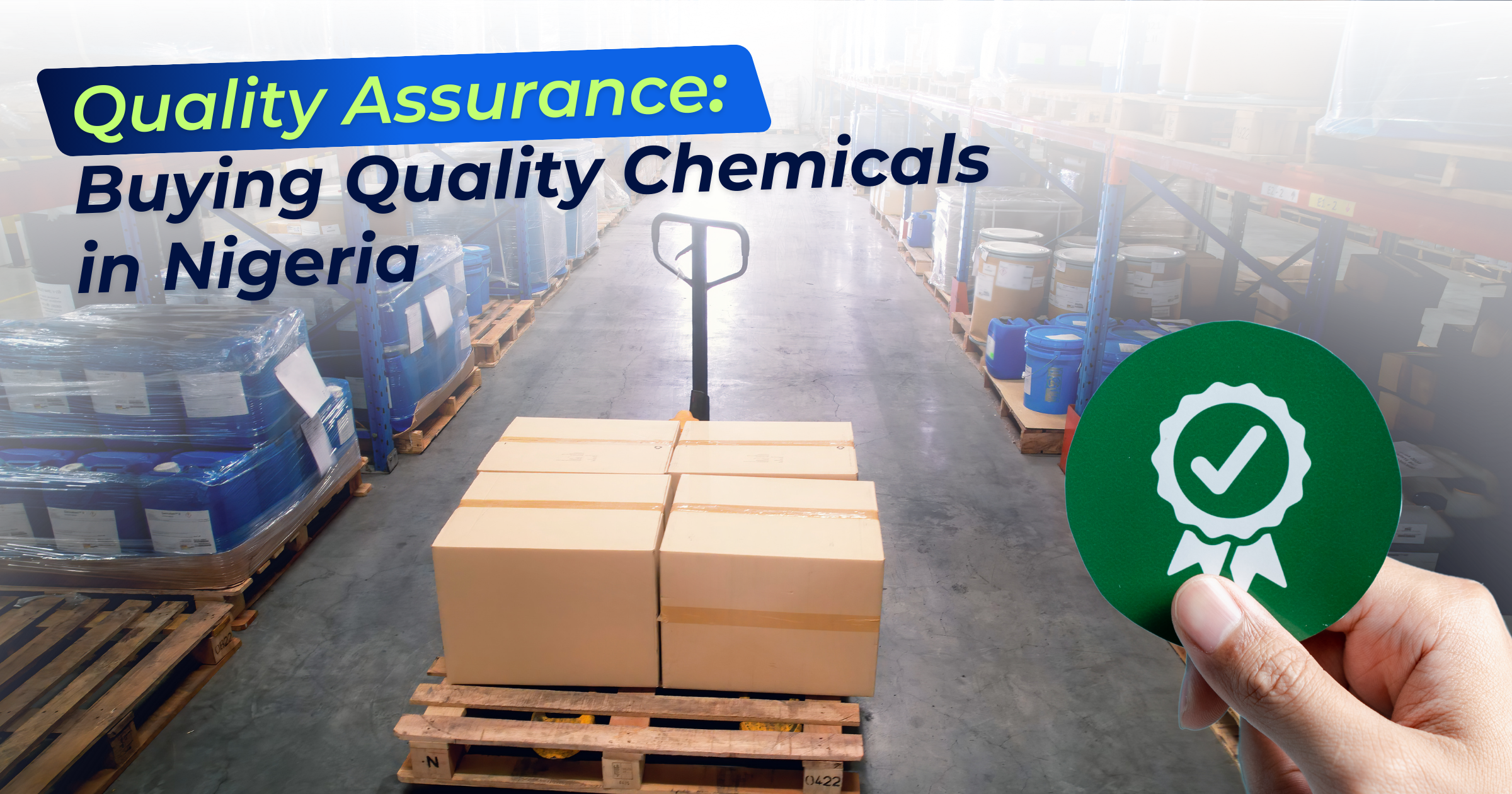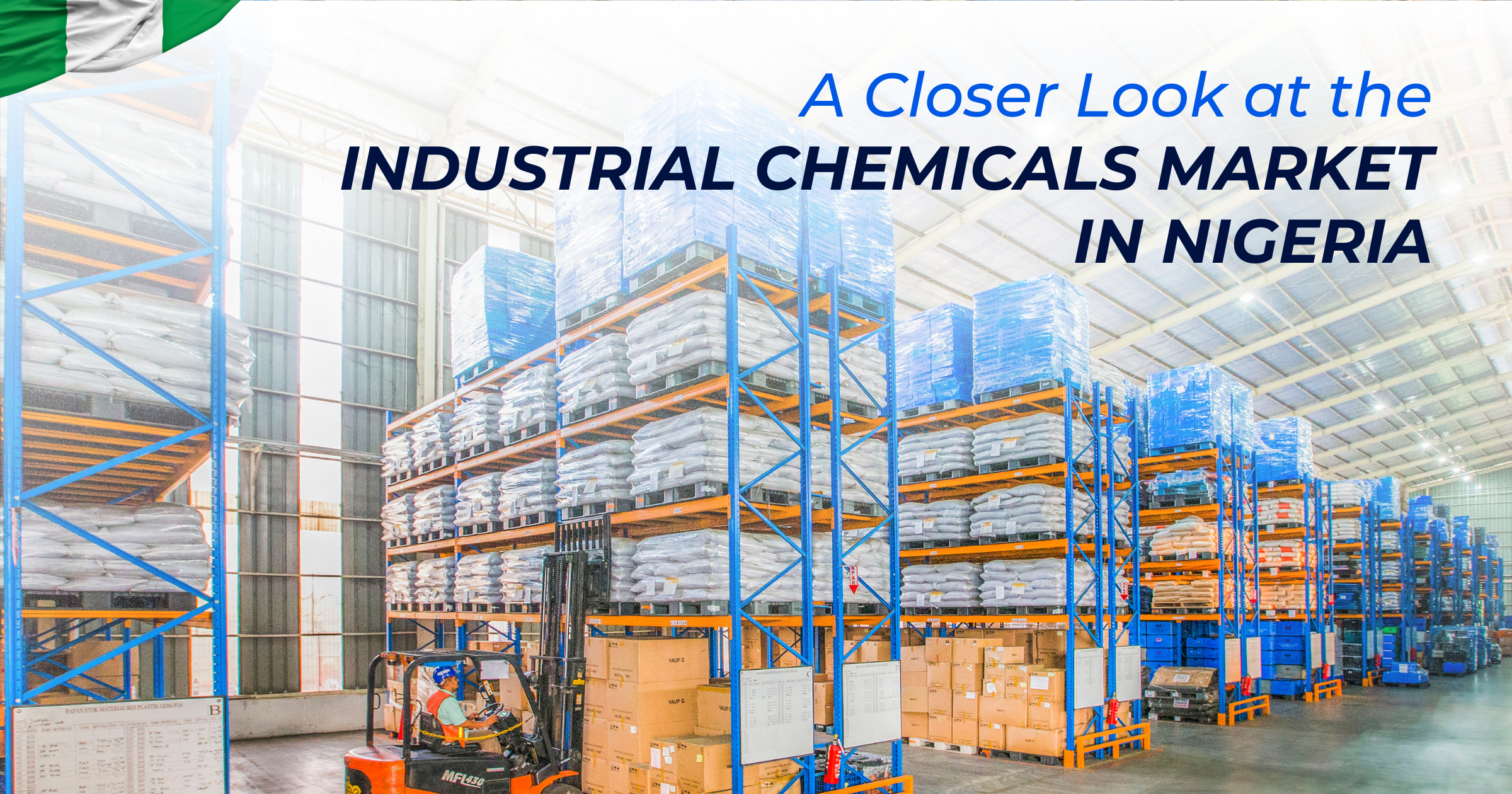
In today’s fast-paced industrial landscape, the focus often shifts to groundbreaking technologies and innovative processes. However, the building blocks that enable these advancements—chemical compounds like caustic soda powder—rarely get the spotlight they deserve. This humble yet powerful chemical has been a cornerstone in shaping multiple industries in Nigeria, from textiles and paper to pharmaceuticals and water treatment.
You know those everyday things we may take for granted? Like Clean water, the soap in our bathrooms, or even the paper we read and write on.
There’s a good chance caustic soda had a hand in making these things. Caustic soda powder is a behind-the-scenes game-changer that does a ton of heavy lifting in various industries.
So, what’s the big deal about caustic soda powder, you ask?
That’s precisely what we’re diving into today. We’ll explore how this unassuming powder has been a quiet revolutionary, shaping everything from your jeans to life-saving medicines. By the end of this read, you’ll see caustic soda powder in a new light—trust me, it’s way cooler than it sounds.
Let’s jump in.
Chemical Properties of Caustic Soda Powder
This section aims to comprehensively understand the chemical properties that make caustic soda powder versatile and indispensable in various industries.
They include:
- Molecular Structure
At its core, caustic soda powder is sodium hydroxide (NaOH). Its molecular structure consists of a sodium ion (Na+), an oxygen atom (O), and a hydrogen atom (H). This simple ionic structure is deceptive; it’s the key to its potent reactivity. For instance, its ability to act as a nucleophile allows it to initiate reactions like saponification, which breaks fats and oils into glycerol and soap.
- Solubility and Exothermic Reactions
Caustic soda powder is highly soluble in water, and this isn’t just a ‘mix and stir’ affair. When it dissolves, it undergoes an exothermic reaction, releasing significant heat. This is particularly useful in industries like pulp and paper, where the heat and the alkaline solution work together to break down tough lignin in wood fibres.
- Reactivity with Acids and Bases
The compound is a strong base, making it highly reactive with acids. Petroleum refineries use caustic soda to neutralize acidic contaminants in ‘sour crude.’ Waste treatment plants also leverage its reactivity to break down complex organic molecules, accelerating the decomposition of organic waste.
- Reactivity with Metals
Caustic soda reacts vigorously with certain metals like aluminium and zinc. This property harnesses the etching and engraving processes.
- Corrosiveness and Sustainability
Caustic soda’s high reactivity makes it highly corrosive, capable of corroding metals and causing severe burns, requiring strict PPE protocols. However, it also helps reduce air pollution through flue gas treatment, and innovations like membrane cell technology promote more sustainable production.
Caustic Soda in Nigerian Industries
Caustic soda has had such a pervasive influence on the modern world that it’s hard to find an industry it hasn’t touched. From making our clothes softer to ensuring our water is clean, caustic soda powder is a silent transformer of the modern world. Now, let’s delve into the industries where this chemical has made a monumental impact.
Textile Industry
In textiles, manufacturers use caustic soda powder in the mercerization process to enhance the luster and strength of cotton fabrics. This has also enhanced the quality of our clothes and made mass production more efficient, affecting everything from fashion to global trade.
Paper and Pulp Industry
Remember the last book you read or the notepad on your desk? Caustic soda powder is crucial in breaking down wood into pulp, making paper production faster and more cost-effective. It’s a cornerstone in an industry that, despite the digital age, remains vital for education and communication.
Cleaning and Detergent Industry
It is also a powerful cleaning agent in detergents and soaps, revolutionizing home care and industrial cleaning. Its impact extends to public health by aiding in sanitation and hygiene.
Food Industry
Manufacturers use caustic soda to peel fruits, vegetables, and process cocoa and chocolate. Consequently, its role in food safety and preservation has far-reaching implications for public health.
Pharmaceutical Industry
Additionally, manufacturers use caustic soda to formulate various drugs and sterilize equipment, ensuring the production of safe medications.
Water Treatment Plants
Last but not least, caustic soda powder is instrumental in water treatment plants, where it adjusts pH levels and helps in the sedimentation process, ensuring water is clean and safe.
Economic Impact of Caustic Soda Powder in Nigeria.
Within the economic framework of Nigeria, caustic soda powder emerges not merely as a chemical compound but as an integral component driving industrial and economic growth. Situated in the bustling urban centres of Lagos and Abuja, one can discern the pivotal role this substance plays in the nation’s industrial tapestry.
The Multiplier Effect
Caustic soda powder is a foundational element in various industries, creating a multiplier effect on economic output. Its application in textiles, paper, and pharmaceuticals boosts those industries and stimulates ancillary sectors such as logistics, retail, and even research and development. The ripple effect on job creation, GDP growth, and technological innovation is substantial.
Commodity Pricing and Market Dynamics
The price of caustic soda powder is a critical economic indicator. Fluctuations in its price can have a cascading effect on the cost of goods and services across multiple sectors. For instance, a spike in caustic soda prices could increase water treatment costs, affecting public utility charges. This interplay makes caustic soda an essential commodity in understanding market dynamics.
Trade Balance and Foreign Exchange
Meanwhile, Nigeria imports caustic soda powder as it lacks natural resources for its production, and the cost of importation affects trade balances and foreign exchange reserves. Conversely, countries that export caustic soda can leverage it as a strategic commodity.
Sustainability and Green Economics
The shift towards sustainable production methods for caustic soda, such as membrane cell technology, aligns with the principles of green economics. Companies adopting these methods not only reduce their environmental footprint but can also benefit from carbon credits and government incentives, adding another layer to their economic impact.
Industrialization and Economic Diversification
In Nigeria- and indeed, Africa, caustic soda powder has the potential to accelerate industrialization and diversify economies that have traditionally been reliant on agriculture or mineral exports.
Job Creation and Skill Transfer
Also, the production and application of caustic soda in Africa could be a significant source of employment. Beyond basic labour, it offers skills transfer and technical training opportunities, contributing to human capital development.
Local Production and Economic Sovereignty
For countries like Nigeria, local caustic soda production could reduce import dependency, conserving foreign exchange reserves. This economic sovereignty could empower Nigeria to negotiate better trade terms and focus on developing local industries, such as Matta’s chemical marketplace.
Environmental Implications of Caustic Soda Powder
One crucial conversation that must be had about chemical use and its influence on industrialization is the ripple effect on the environment. This part of the article will outline all sides of the discourse- the good, the bad, and the ugly.
The Good: Pollution Control and Waste Management
Caustic soda powder plays a critical role in environmental management, particularly in water treatment plants, where it neutralizes acidic waste to ensure safe water discharge. In 2014, the Flint, Michigan water crisis highlighted the importance of such measures. After the city switched its water supply, lead leached from corroded pipes, causing a severe public health crisis.
The Bad: Handling and Disposal Challenges
However, improper handling of caustic soda presents environmental risks. Its corrosive nature can lead to soil contamination if not managed carefully. The infamous “Love Canal” tragedy exemplifies these dangers. During the 1940s and 50s, the Hooker Chemical Corporation dumped 20,000 tons of toxic waste into an abandoned canal. By the 70s, residents experienced severe health issues, forcing evacuation and leaving a grim environmental legacy.
The Ugly: Potential for Ecological Harm
If mismanaged, caustic soda can harm ecosystems. Leaks into water bodies can kill aquatic life, while soil contamination disrupts agriculture. In Japan’s Minamata tragedy, industrial waste contaminated the bay with methylmercury, poisoning the food supply and causing irreversible neurological damage. This disaster spurred stricter global regulations on chemical waste management
While it helps the separation process, improper disposal has led to water contamination and soil degradation, affecting local communities and ecosystems. Regulatory bodies like Nigeria’s NESREA are working to enforce stricter guidelines for chemical use and disposal)
Ensuring Adequate regulation
Given these environmental implications, stringent regulations govern caustic soda production, handling, and disposal. In Nigeria, for example, the National Environmental Standards and Regulations Enforcement Agency (NESREA) has guidelines that industries must follow to mitigate environmental risks.
A Closer Look at Sustainable Production Methods
The future lies in adopting circular economy principles and green chemistry. For instance, companies can look into methods for recycling caustic soda from industrial processes, reducing the need for fresh material.
Also, leveraging sustainable methods like membrane cell technology for caustic soda production offers a more sustainable path, reducing energy consumption and emission of harmful byproducts like asbestos and mercury.
Furthermore, the emergence of bipolar membrane electrodialysis is beneficial, as its applications require both acids and bases, thereby reducing waste. Additionally, it improves resource efficiency, and lowers the use of chemicals for ph adjustment, making it eco-friendly.
Also, the use of Zero Liquid Discharge (ZLD) systems is also gaining sustainability attention, providing environmental benefits such as water conservation, and waste minimization, contributing to circular economy.
Although not directly tied to caustic soda production, carbon capture and storage (CCS) integrates seamlessly into production facilities, reducing CO2 emissions and enhancing the environmental profile of caustic soda manufacturing.
These technologies represent the forefront of sustainable caustic soda production. They offer a path to balancing industrial growth with environmental stewardship, a critical consideration for companies and regulators.
Wrapping up
Imagine a world without caustic soda powder. The textile industry would struggle to produce durable fabrics, raising costs and reducing comfort. Paper production would falter, making books and essential documents scarce and expensive.
Furthermore, water treatment plants would face difficulties in pH control, threatening drinking water quality. Pharmaceutical companies would lose a vital component for drug formulation and sterilization, impacting medication effectiveness. Even cocoa processing, essential for chocolate, would suffer.
Caustic soda powder remains crucial to Nigeria’s industrial growth. Despite challenges, its presence drives innovation and sustainability. Matta actively supports this progress by streamlining the global trade of chemicals and raw materials every day.
FAQs
Is caustic soda powder edible?
- No, caustic soda is not edible and is hazardous if ingested.
Can caustic soda powder be used as a cleaning agent at home?
- While it’s a potent cleaning agent, it’s not recommended for home use due to its corrosive nature.
Does caustic soda contribute to climate change?
- Indirectly, yes. The production process can emit greenhouse gases unless sustainable methods are used.
Can caustic soda powder neutralize acid spills?
- Yes, it can neutralize acids, but it should only be handled by professionals due to its corrosive nature.
Is caustic soda used in food processing?
- Yes, it’s used in food processing, but in a highly controlled environment.
Can caustic soda powder dissolve metals?
- It can corrode some metals like aluminium but doesn’t dissolve them like acids do.
Is caustic soda biodegradable?
- No, it’s not biodegradable and requires proper disposal methods.
Can caustic soda be used in organic farming?
- No, it’s not approved for organic farming due to its synthetic nature.
Does caustic soda have a shelf life?
- Generally, it has a long shelf life if stored properly, but moisture can cause it to deteriorate.
Can caustic soda powder be turned into a liquid?
- Yes, it can be dissolved in water to create a caustic solution.
Is caustic soda used in the production of renewable energy?
- It’s not directly used in renewable energy production but plays a role in some related manufacturing processes.
Does caustic soda have any medical applications?
- It’s not used directly in medicine but is used in the manufacturing of some pharmaceuticals.
Can caustic soda powder be used in fire extinguishers?
- No, it’s not used in fire extinguishers and can be hazardous in such applications.
Is caustic soda used in space exploration?
- It’s not directly used in space exploration but may be involved in manufacturing some components.





